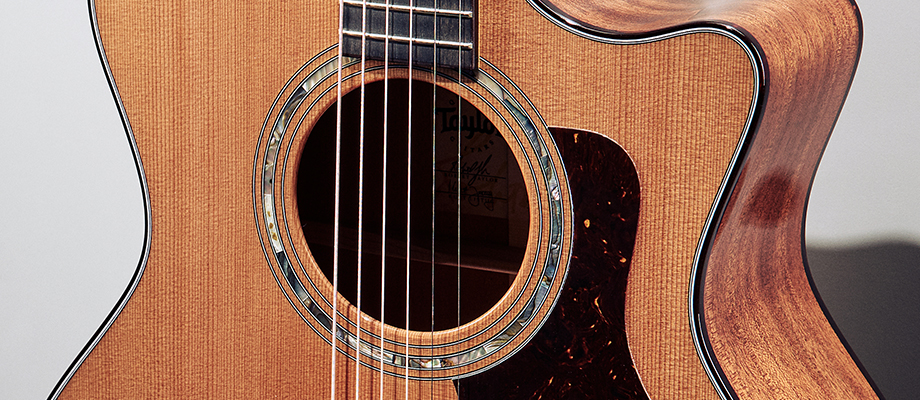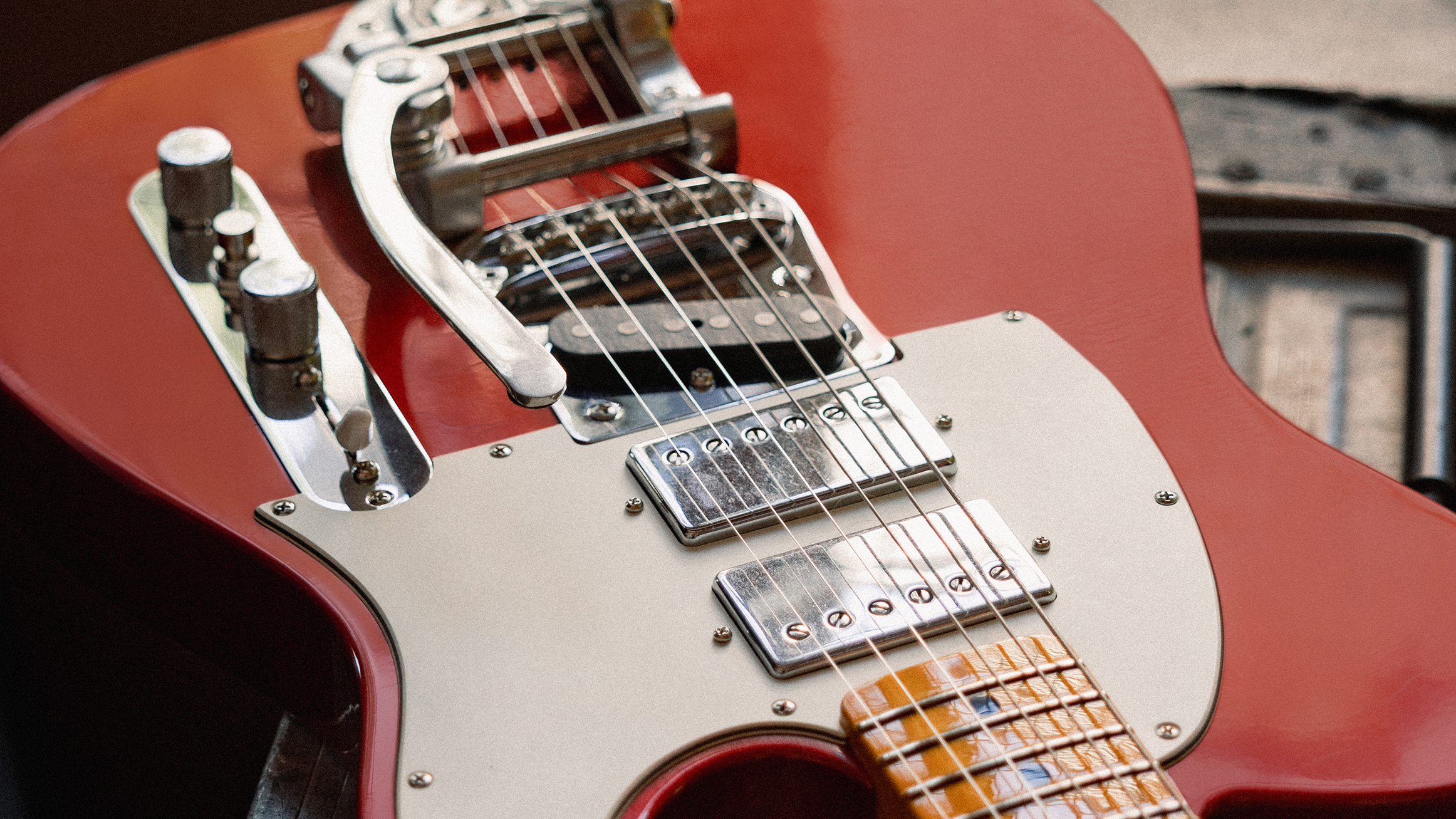GuitarPlayer Verdict
The Legacy 514ce embodies this model’s all-purpose sonic and playable nature and accommodates everything from delicate fingerpicking to precision flatpicking. It does well with percussive playing as well, making it an acoustic model that can accommodate any style. Those looking for traditional Taylor tone in a flexible acoustic-electric instrument should give it an audition.
Pros
- +
Ideal all-purpose workhorse built according to Bob Taylor’s original design
- +
Great playability
- +
Uniquely warm-yet-articulate tone.
Cons
- -
None
You can trust Guitar Player.
Taylor’s ultimate move in its 50th anniversary celebration is more than a quick commemoration limited edition—it’s about honoring an enduring legacy. Whereas the lion’s share of contemporary Taylor news has rightfully been focused on the numerous revelations spearheaded by chief guitar designer, president and CEO Andy Powers, the current focus is on a breakthrough Bob Taylor design from the ‘90s that was revolutionary in its time and became a bona fide classic worth revisiting.
Fifty years to the day after they first opened on October 15th, 1974, Taylor unveiled the retrospective Legacy Collection with three models inspired by Taylor's original rosewood and spruce 800 Series: the Dreadnought Legacy 810e, Jumbo Legacy 815e, and 12-string Jumbo Legacy 855e; plus two additional models honoring Bob Taylor's iconic Grand Auditorium body style: the rosewood/cedar Legacy 714ce and the mahogany/cedar Legacy 514ce on review here.
The first three harken back to Taylor’s earliest guitars. The Grand Auditoriums pay homage to the body style Taylor introduced on its 20th anniversary in 1994 and became the company flagship. I simply had to review a Legacy 514ce because I’ve got more experience playing a Taylor 514ce than any other acoustic.
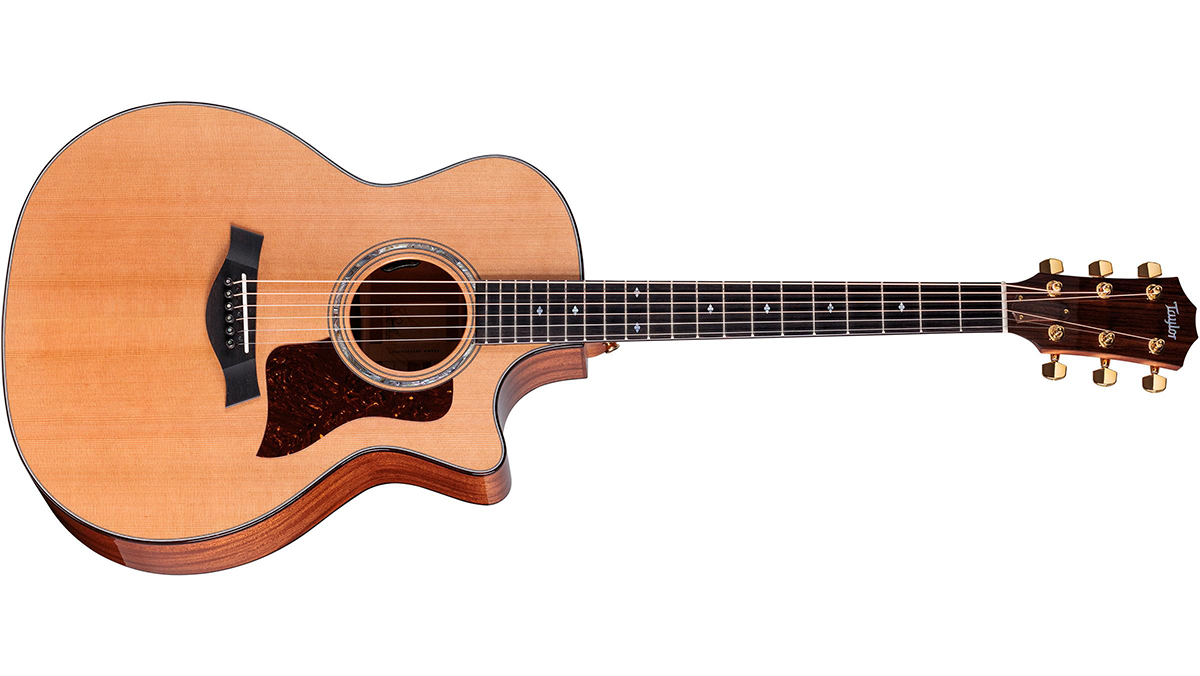
Flash back to the fall of 2008 when the United States was heading into a major recession, and I had to shelve plans to have a custom acoustic guitar built. Frets editorship at GP was still far off in the future, and I was on the hunt for a special deal. A friend at an insurance company called to report a curious case where a reverend at a church had reported a guitar stolen. He found it after the claim was settled with a replacement, and the insurance company was holding an internal auction for the recovered original. I made a bid sight unseen for what turned out to be a 1998 Taylor 514ce, which became my Christmas miracle.
The Grand Auditorium body was perfect for me for the same reasons as so many players. Here was an acoustic guitar that had exceptional playability with a cutaway and an onboard Fishman dual-element electronic system that made it particularly stageworthy. It was exactly the kind of acoustic a Stratocaster player could bring to a gig and feel comfortable on mixing a few folky tunes into an otherwise electric set.
I eventually came to develop a real appreciation for the unique wood combination of mahogany back and sides with a cedar top. This guitar sounded a bit warmer than most Taylors featuring spruce tops and other woods for the back and sides. Even as I became Frets Editor in 2016 and went on to evaluate tons of acoustics including myriad modern Taylors, there was something special about that old “Reverend,” which has remained a primary stage and studio axe.
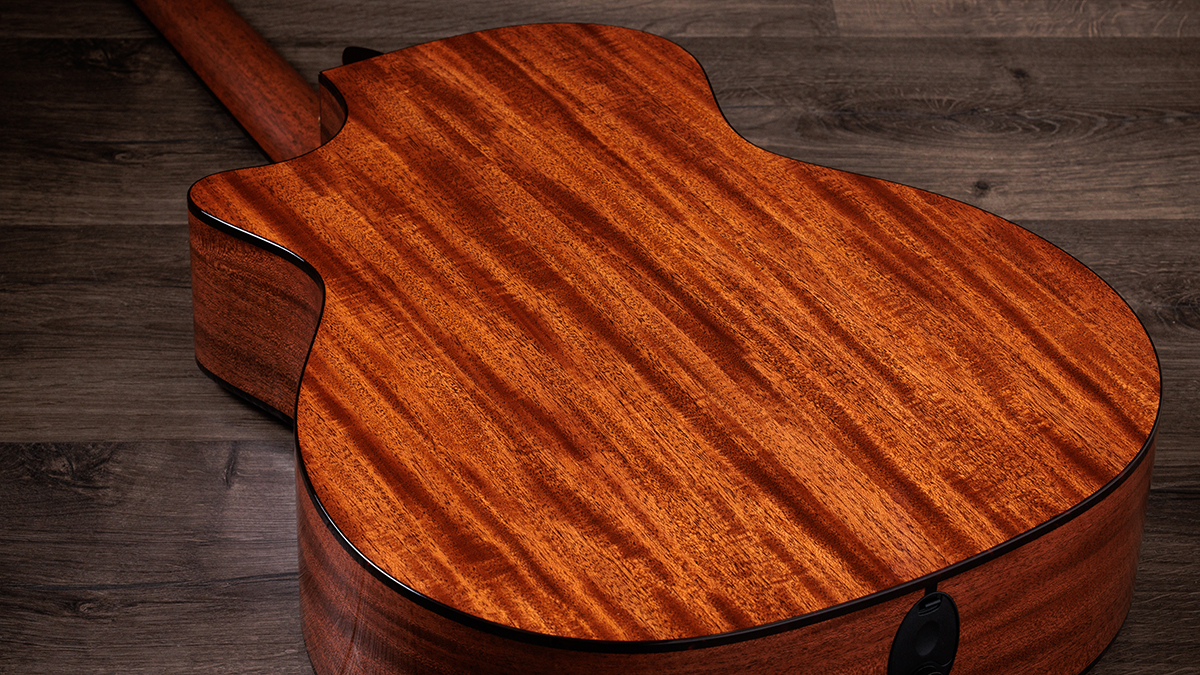
All the while, Taylor has been tweaking the 514ce. Powers redesigned it with V-Class bracing in 2018. Another interesting change happened in 2022 when Taylor re-designed the 500 Series with a new, more sustainable tonewood — Urban Ironbark — replacing mahogany, and a torrefied Sitka spruce top replacing western red cedar. The 514ce had evolved into a different beast. I reviewed it in the Holiday 2022 issue noting that it sounded better in many ways, but also simply different than the classic mahogany-and-cedar guitar of yore. So it makes sense that of all the Grand Auditoriums to be considered for Legacy treatment, the 514ce would be chosen.
According to Taylor, “These retrospective models reflect the full scope of our history by blending foundational design elements with key developments along the way.” The first 100 guitars of each Legacy model built feature an interior label personally signed by Taylor founders Bob Taylor and Kurt Listug, which was nice to notice when taking the Legacy 514ce out of its brown hardshell case.
My first reaction was sheer joy. It was almost like meeting my wife again for the first time. There she was, looking as beautiful as I remembered but had almost forgotten after nearly two decades going everywhere together from the beach to the stage. There’s something special about a glossy natural finish on a fine piece of western red cedar that appears slightly unusual, yet familiar and classy. Golden hardware on the headstock and a three-ring green abalone rosette add the right amount of elegance without being obnoxious. A faux tortoiseshell binding with just a thin white strip does a nice job bringing the top with its ebony bridge and white Micarta saddle together with back and sides made of solid neo-tropical mahogany.
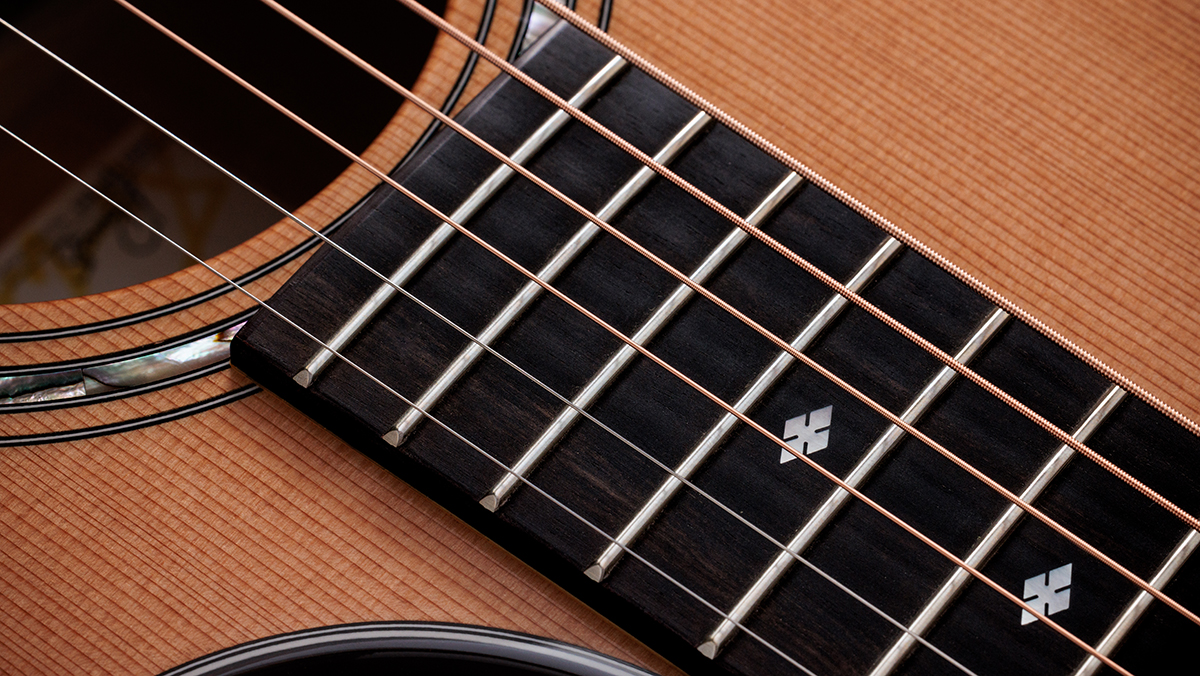
The neck profile feels slightly different, as it’s made to modern Taylor specs “designed to optimize playability and allow for easy micro adjustability.” Even as used to the old neck as I am, which pre-dates the modern Taylor neck, I’d say that the new one indeed plays a bit better, and the difference in having fabulous new frets and wonderfully-not wonky tuners is huge. There is some weird way in which the old neck seems to deliver the fretboard up on a platform that I appreciate. It seems to accommodate an aggressive attack and deliver individual notes with distinct projection, but the Legacy offers similar stability with greater nuance, dynamic range, resonance and sustain.
The sound of the Legacy is very similar to my “classic” 514ce. I’d say it’s even more like an original 514ce than the current 514ce Urban Ironbark with its different woods and bracing. The Legacy 514ce features good old-fashioned X bracing along with what Taylor calls a “relief rout.” It’s got a generally more traditional tone that’s also a bit warmer and softer than most Taylors because of the mahogany-and-cedar combination that is so familiar to fans of the classic 500 Series. The rap on red cedar is often that it’s liable to give in under an aggressive attack because of its softness, but in my experience it holds up just fine, and it can actually take quite a beating. And I find that the coupling with mahogany yields great balance with plenty of articulation.
If I had to summarize the comparison of these two 514s head to head, I’d say the classic one has a more fundamentally focused and robust tone whereas the Legacy 514ce sounds a bit more open, responsive to a lighter touch, and has some of modern Taylor’s more harmonically complex sound, even if it’s not all the way to the ultra high-fidelity, holistically tuned tone of a V-Class design.

Regarding the amplified tone, the main thing I noticed about the top side was the lack of old-fashioned preamp controls. Of course, Taylor updated the vintage Fishman Prefix found on my classic 514ce, but interestingly, not with its Expression System 2. In this case, a simple L.R. Baggs Element VTC system consists of an undersaddle piezo with flywheel controls for volume and tone tucked away in the upper lip of the sound hole. So not only is there no huge preamp panel built into the upper side — there’s nothing at all.
And while it took a while for me to get used to not having the many controls of the old Fishman preamp at my fingertips, I found the base sound of the Baggs with the tone control set dead in the middle to respectfully represent the acoustic hallmarks of the instrument.
The Legacy 514ce embodies this model’s all-purpose nature, both sonically and in terms of playability. This Grand Auditorium with its Venetian cutaway accommodates all sorts of attacks from delicate fingerpicking to precision flatpicking, and it does well with percussive playing too. All in all, this extremely versatile instrument can accommodate pretty much any style. I’d recommend the Legacy 514ce to any fan of traditional Taylor tone, and pretty much any player looking for a flexible acoustic-electric instrument. Kudos to Taylor for honoring a Bob Taylor classic in the 500 Series with a faithful recreation in the form of the Legacy 514ce.
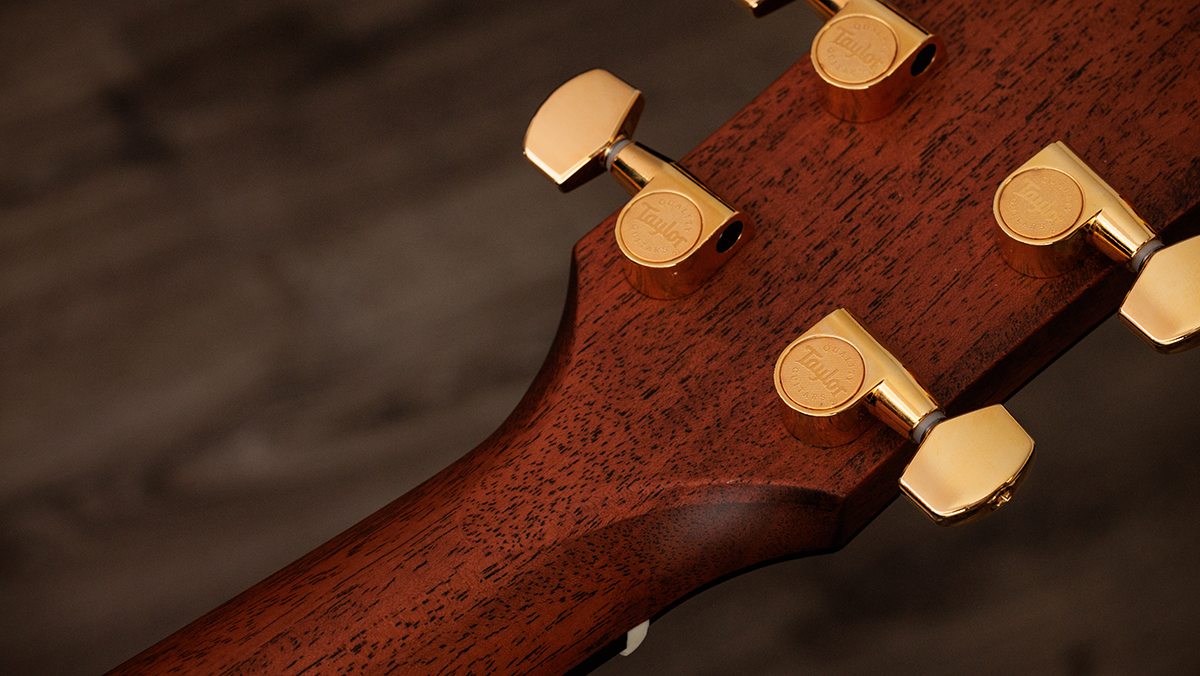
SPECIFICATIONS
Legacy 514ce
CONTACT taylorguitars.com
PRICE $3,399 street, hardshell case included
NUT WIDTH 1.75", white Tusq
NECK Neo-tropical mahogany, satin finish, mother-of-pearl small diamond inlays
FRETBOARD West African ebony, 25.5" scale
FRETS 20
TUNERS Taylor gold plated with gold buttons
BODY Solid neo-tropical mahogany back & sides, solid western red cedar top (X-bracing with relief rout)
BRIDGE West African ebony with compensated white Micarta saddle
ELECTRONICS L.R. Baggs Element VTC with volume and treble controls mounted in sound hole
POWER 9V battery pack
FACTORY STRINGS D’Addario XS Coated Phosphor Bronze Light gauges .012 - .053
WEIGHT 4.3 lbs (as tested)
BUILT USA
KUDOS Ideal all-purpose workhorse built according to Bob Taylor’ original design with great playability and uniquely warm-yet-articulate tone. A consummate classic Taylor Grand Auditorium
CONCERNS None
Jimmy Leslie has been Frets editor since 2016. See many Guitar Player- and Frets-related videos on his YouTube channel, and learn about his acoustic/electric rock group at spirithustler.com.
“Occasionally one comes my way, and I’m like, 'Yeah, that needs to happen.’ This was one of those cases.” Samantha Fish on the guitar that became the heart and soul of her new album, ‘Paper Doll’
“A guitar with a wonderful history and many stories to tell”: Robert Plant is selling gear for charity and only one guitar remains – a golden-era Strat with a storied history
Sammy Hagar says his new single was co-written with Eddie Van Halen “from beyond”, over a year after he died
